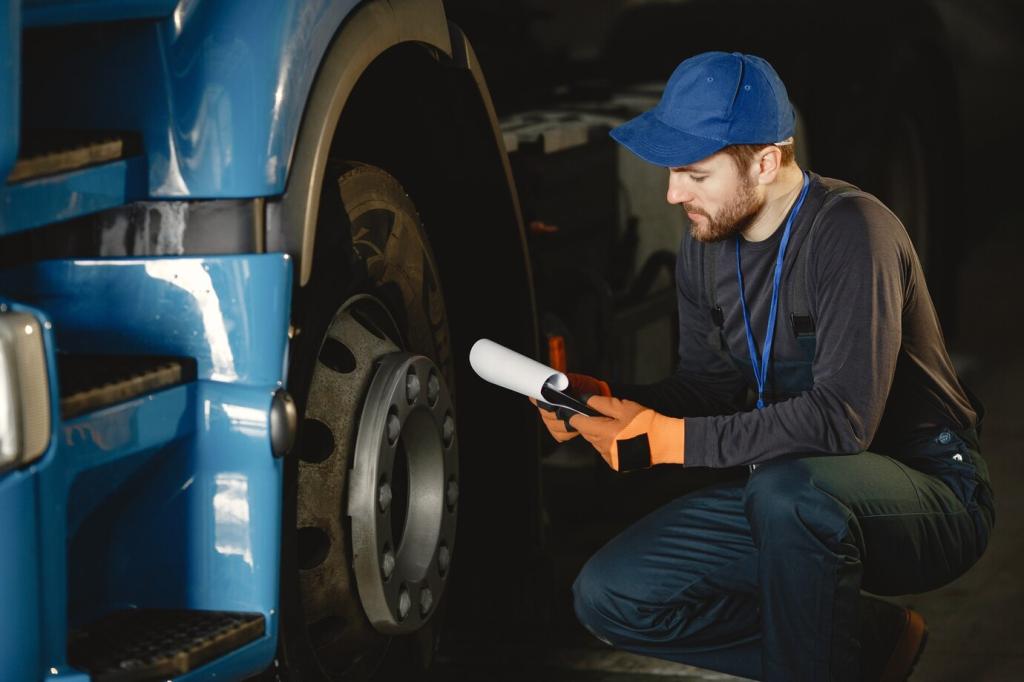Build a Daily Tire Inspection Habit
Start at the driver’s front and move clockwise, checking inflation, tread depth, valve stems, caps, and any embedded debris. Listen for leaks, feel for heat, and note mismatched wear. Comment with your favorite quick checks, and subscribe for our printable daily checklist.
Build a Daily Tire Inspection Habit
Feathering hints at alignment, shoulder wear screams low pressure or overloading, and center wear suggests overinflation. Track patterns by axle and position to catch root causes early. Share a photo of your latest wear mystery, and we’ll decode it in a future post.
Build a Daily Tire Inspection Habit
Record findings immediately with tire position, measurement, and a simple urgency code. Pair notes with odometer readings to spot trends by route. Tell us what app or template you use, and we’ll feature the most effective systems for fleets of any size.







